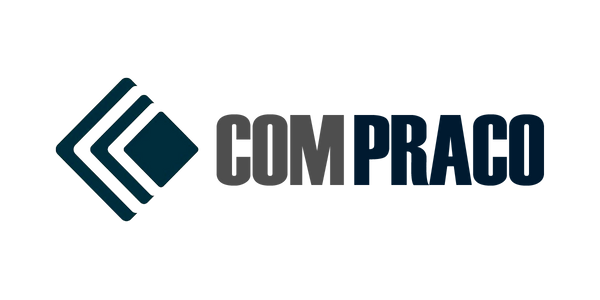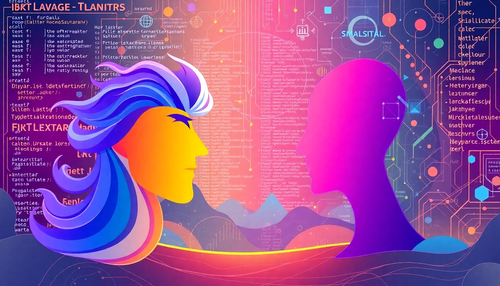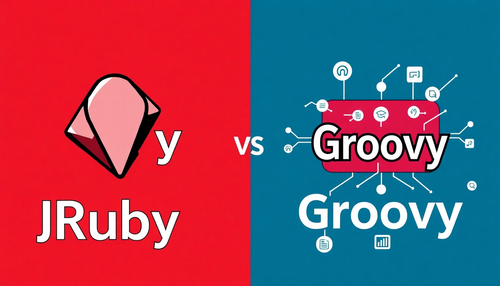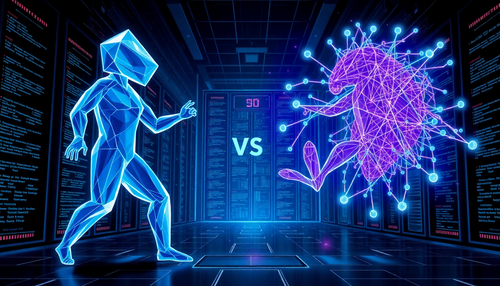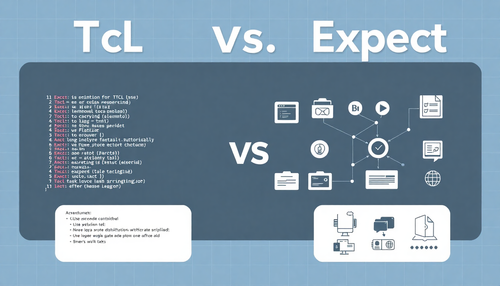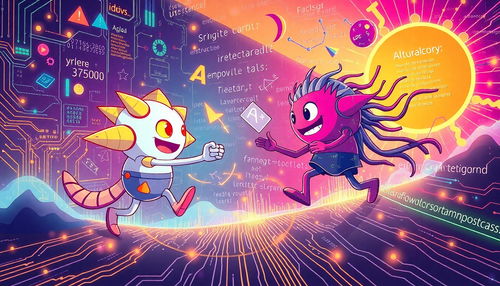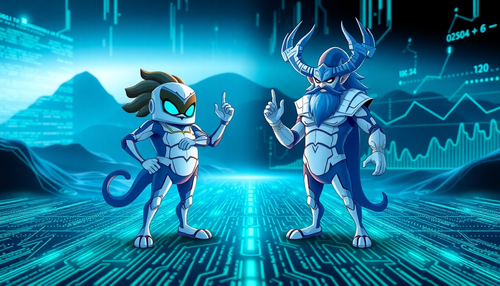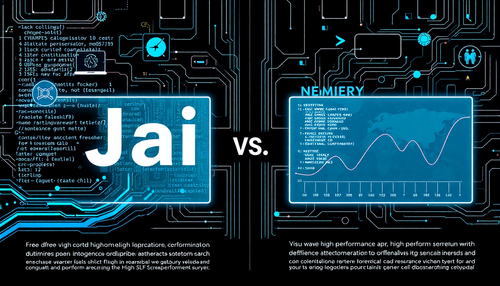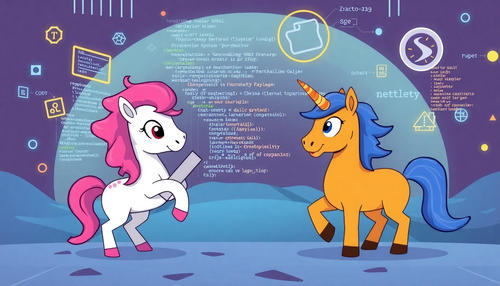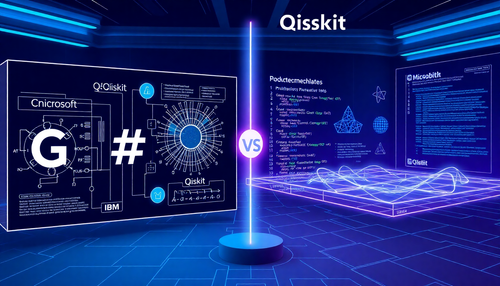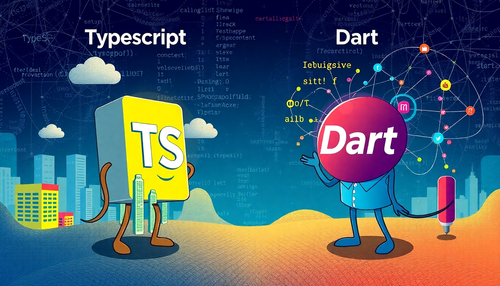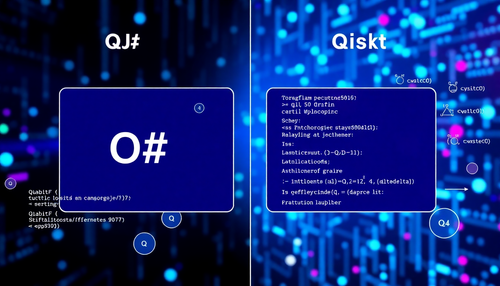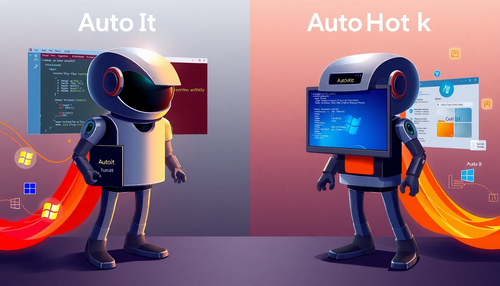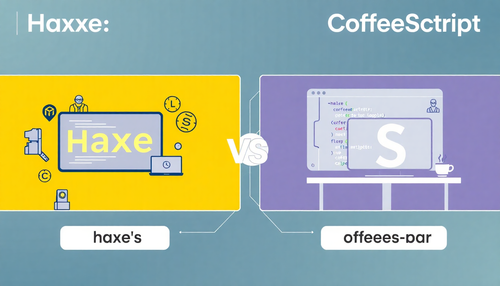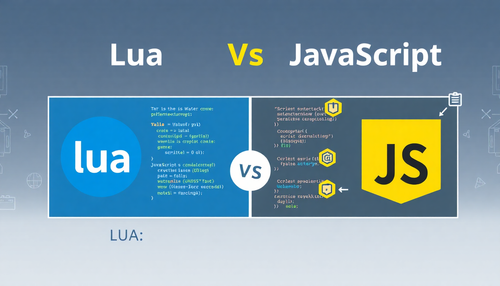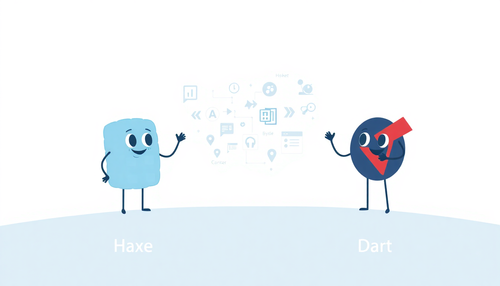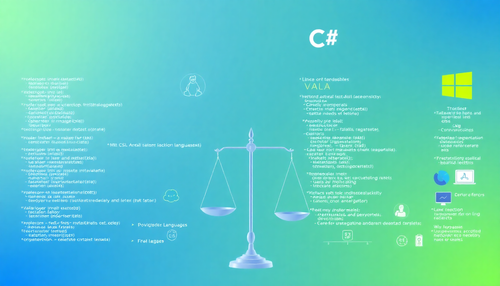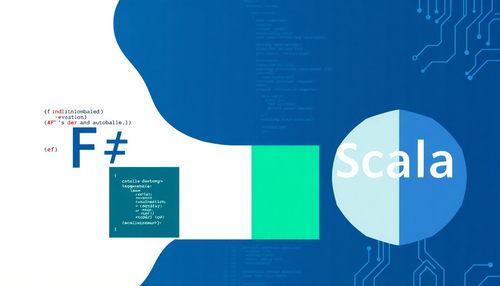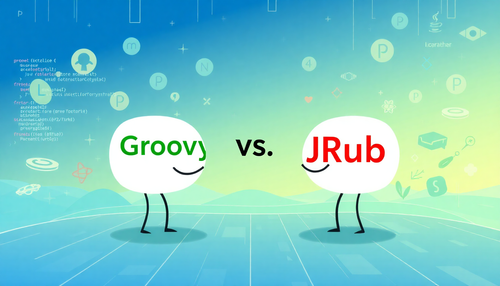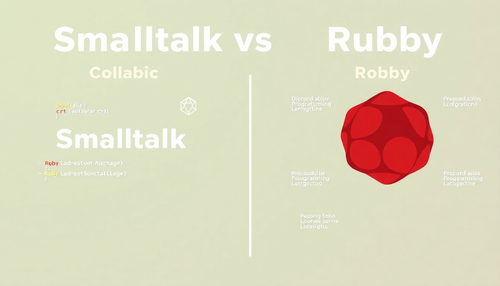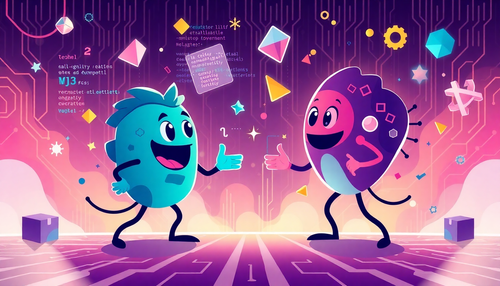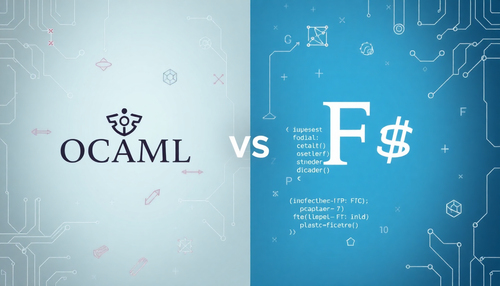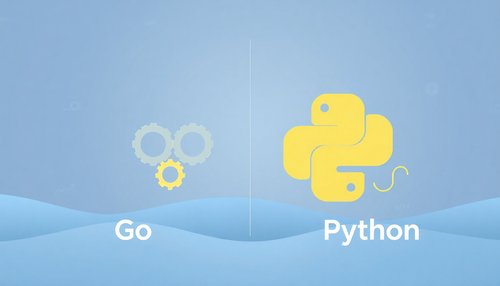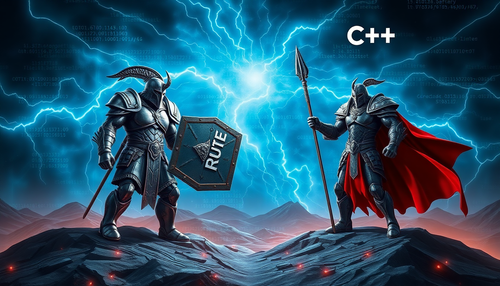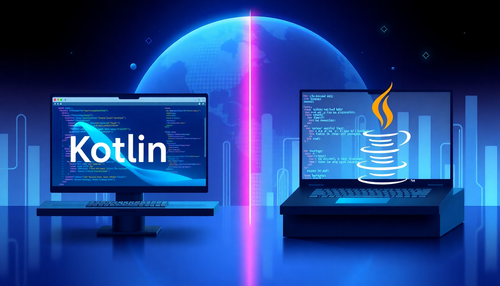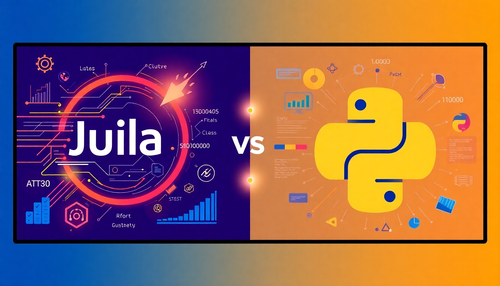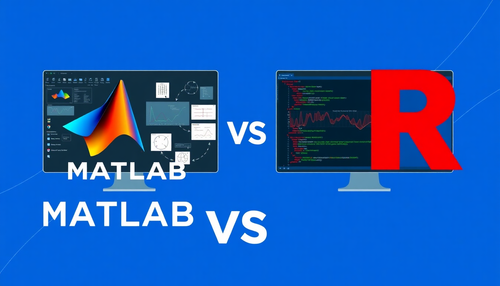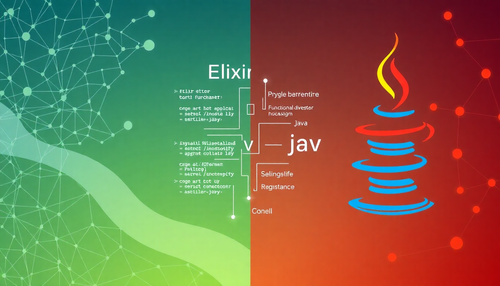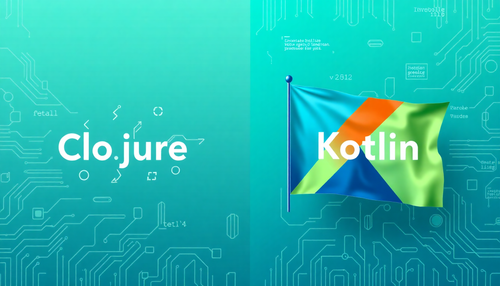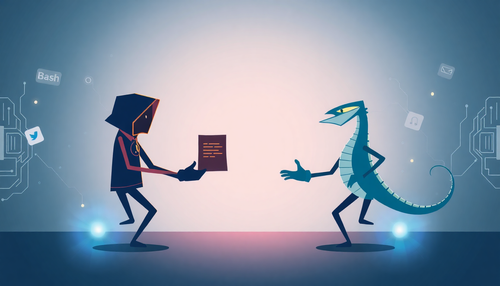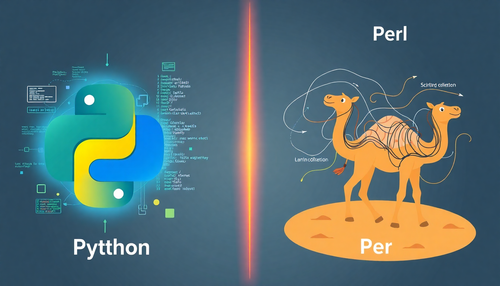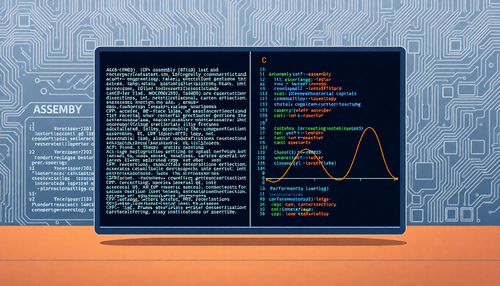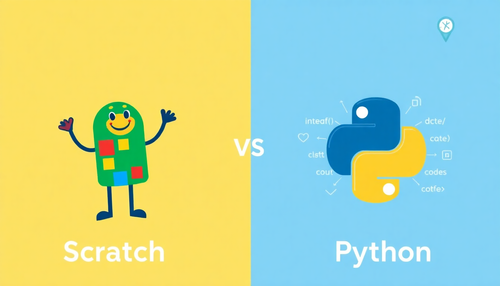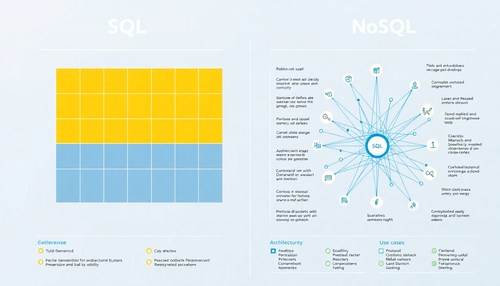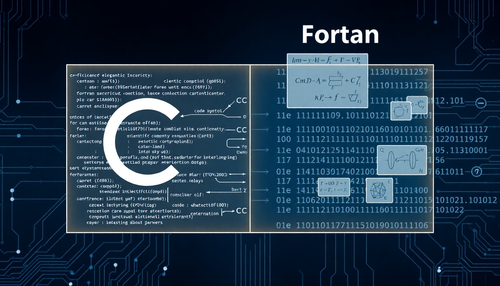Discover the strengths and weaknesses of Ruby vs Python. Make an informed choice for your next development project.

Ruby vs. Python has sparked interest among developers for good reason, as both are extremely versatile programming languages, tailored to drive innovation while remaining agile in a fast-paced environment. Their adaptive capabilities have cemented their place as preeminent programming languages across the world, each with distinct attributes suited to specific functions. This article looks at how these two languages present unique benefits that are applicable across different domains while exploiting their features.
What is ruby?
Ruby is a dynamic object-oriented programming language known for its elegant syntax and productivity. Yukihiro Matsumoto created the initial version of Ruby in the mid-1990s. The Ruby programming language was intentionally created with a focus on increasing productivity and programmer satisfaction while prioritizing ease of coding. The language is commonly characterized as programmer-friendly, with a focus on simplicity and flexibility. Ruby's fundamental principle revolves around the concept of least surprise with the goal of reducing unforeseen results while promoting intuitive programming.
The suite of Ruby development services covers resilient solutions for various domains, such as web application development and e-commerce platforms. Utilizing Ruby's sophisticated syntax and robust functionalities empowers software engineers to build scalable and maintainable applications with excellent performance.
Advantages/Pros of Ruby
Clean and readable syntax : Ruby's syntax is designed to be expressive and natural, similar to plain English. It allows developers to write code that is easy to read and understand, thereby improving collaboration and maintainability.
Productivity : Ruby promotes developer productivity through its concise and expressive syntax. It offers features like automatic memory management with dynamic typing and high-level abstractions, thus enabling developers to write code quickly and efficiently.
Rich ecosystem : Ruby has a vibrant and mature ecosystem with a wide variety of libraries and frameworks like Ruby on Rails, Sinatra, and RSpec. These tools provide robust web development and testing solutions that enable developers to quickly build applications.
Metaprogramming capabilities : Ruby's metaprogramming capabilities allow developers to write code that can modify itself at runtime. This flexibility allows for the creation of dynamic and extensible applications, which makes Ruby an excellent choice for projects that require code generation or dynamic behavior.
Disadvantages/Cons of Ruby
Performance : Compared to other languages Ruby may be slower in terms of execution speed. However, advances in interpreter implementations and the use of alternative runtimes such as JRuby and Rubinius have improved Ruby's performance.
Scalability : Ruby can face challenges when it comes to handling highly concurrent or computationally intensive tasks. While frameworks like Ruby on Rails are scalable for many applications, Ruby's performance may not be ideal for specific use cases like real-time systems or high-frequency trading.
Learning curve for performance optimization : Optimizing Ruby code for performance may require advanced techniques and internal knowledge of the language. Achieving optimal performance often requires knowledge and fine-tuning, which can be a learning curve for web and app developers new to Ruby.
Limited support for mobile development : Although Ruby is a versatile language, it is not as widely used for mobile development compared to languages like Java or Swift. Although there are frameworks like RubyMotion, the ecosystem for developing native mobile apps in Ruby is relatively smaller.
Which companies use Ruby?
Several well-known companies use Ruby in their technology stack. Here are some companies that use Ruby.
- Airbnb
- Shopify
- Stripe
- Muscular contraction
- Delivery Hero
- GitHub
These companies have recognized the benefits of Ruby and have successfully built scalable and innovative applications using the language.
What tools integrate with Ruby?
The popularity of Ruby has led to the development of several tools and frameworks that integrate seamlessly with the language. Here are some popular tools that use Ruby.
- Ruby on Rails: A widely used web application framework that follows the Model-View-Controller (MVC) architectural pattern.
- Sinatra: A lightweight web framework for building simple and fast web applications.
- RS Specification: A behavior-driven development (BDD) framework for testing Ruby code.
- Capistrano: A remote server deployment and automation tool.
- Helper: A background processing framework for running asynchronous jobs.
- Lever: Pry is an alternative to the standard Ruby REPL (Read Eval Print Loop) that offers a variety of features for debugging and exploration.
What is Python?
Python is a dynamically typed and interpreted programming language known for its ease of use. Python was developed by Guido van Rossum during the late 1980s and was initially released in 1991. Python prioritizes code readability and offers a simplified, concise syntax that makes it a go-to language for both new and experienced developers.
Python is a high-level programming language that serves developers working in diverse domains, including but not limited to data analysis, scientific computing, artificial intelligence, and automation. Python's popularity and wide adoption can be attributed to its versatility and extensive collection of libraries and frameworks.
Python development services make it easy for developers to create robust and scalable solutions across multiple platforms and domains. The Python programming language has a vast library ecosystem that covers widely used frameworks such as Django and Flask. These frameworks equip developers with the resources needed to build robust web applications with ease.
Advantages/Pros of Python
Readability and Simplicity : A critical advantage of working with Python is its readability and simplicity due to the clear syntax guidelines in PEP 8. This consistency ensures ease of collaboration on projects while maintaining code bases.
Vast ecosystem and libraries : Python has a rich ecosystem with an extensive collection of libraries and frameworks. The Python Package Index (PyPI) hosts thousands of open source packages that help developers leverage existing solutions and accelerate development.
Versatility : Python is a versatile language that supports multiple programming paradigms such as procedural along with functional and object-oriented programming. This flexibility allows developers to choose the best approach for each project and promotes code reuse.
Strong Community and Support : Python has a large and active community of developers who contribute to its growth and improvement. The community offers abundant resources, along with tutorials and forums that make it easy to seek help or find solutions to problems.
Disadvantages/Cons of Python
Global Interpreter Lock (GIL) : Python's Global Interpreter Lock can limit performance when it comes to parallel execution of threads. However, this limitation primarily affects CPU-bound tasks and does not significantly affect asynchronous or I/O-bound code.
Performance : Python may have performance limitations when compared to lower-level languages like C or C++ due to its interpreted nature. However, Python offers several tools and techniques, such as leveraging compiled extensions to mitigate performance bottlenecks when necessary.
Mobile Development : Similar to Ruby, Python is not widely used for native mobile app development. While frameworks like Kivy and BeeWare provide options for mobile development, the ecosystem for Python developers in this domain is relatively smaller compared to languages like Java or Kotlin.
Runtime Overhead : The interpreted nature of Python can result in higher runtime overhead compared to compiled languages. This overhead is typically negligible for most applications, but can affect performance-critical systems.
Which companies use Python?
Python has gained immense popularity and is widely adopted by countless companies across different industries. Some notable companies that use Python include.
- Netflix
- Dropbox
- Spotify
These companies leverage Python's versatility and extensive libraries to create scalable and innovative solutions.
What tools integrate with Python?
The popularity of Python has led to the development of countless tools, libraries, and frameworks that integrate seamlessly with the language. Here are some examples:
- Django: A high-level web framework for building robust and scalable web applications.
- Flask: A lightweight web framework that provides a flexible and minimalist approach to web development.
- NumPy: A library for scientific computing and numerical operations, particularly useful for working with arrays and matrices.
- Pandas: A data manipulation and analysis library that offers high performance along with easy-to-use data structures and data analysis tools.
- TensorFlow: An open-source machine learning framework for building and training various types of machine learning models.
PyTorch: A machine learning library known for its dynamic computing graphs and ease of use for researchers and developers.
Main differences between Ruby and Python
Ruby and Python have distinct differences, along with some similarities that may influence language choice for specific use cases. Here are some important differences between Ruby and Python code.
Syntax : Ruby syntax focuses on elegance and expressiveness, resembling natural language constructs. Python syntax emphasizes readability and clarity by following a more structured and minimalist approach.
Philosophy : Ruby emphasizes developer happiness and elegance as it aims to provide an enjoyable programming experience. Python emphasizes simplicity along with readability and the “There’s only one way to do it” (TOOWTDI) philosophy, thus promoting code clarity and maintainability.
Community and Ecosystem : Both Ruby and Python have thriving communities, but the Python community is larger and more diverse. The Python ecosystem offers a wider range of libraries and frameworks that make it suitable for multiple domains and use cases.
Web development frameworks : Ruby on Rails is a popular web development framework built with Ruby and known for its convention-over-configuration approach. Python offers several frameworks like Django and Flask for building web applications, but each has its own strengths and design philosophies.
Metaprogramming : Ruby has powerful metaprogramming features that allow developers to write code that can modify itself at runtime. Python, on the other hand, has more limited metaprogramming capabilities, but offers dynamic capabilities through its introspection capabilities.
Performance : The interpreted nature of Python and the presence of the Global Interpreter Lock (GIL) can affect performance, especially for CPU-bound tasks. Ruby's performance can also be a concern, although advances in interpreter implementations and alternative runtimes have improved its speed.
Mobile Development : Although both languages have frameworks for mobile development, Python's ecosystem for native mobile app development is relatively smaller compared to languages like Java or Swift.
| Criterion | Phyton | Ruby |
| Year of Creation | 1991 | 1995 |
| The Creator ( Wikipedia link ) | Guido van Rossum | Yukihiro “Matz” Matsumoto |
| Documentation ( link ) | Python Docs | Ruby Docs |
| Language type | Interpreted Language | Interpreted Language |
| Typing | Dynamically typed | Dynamically typed |
| TIOBE classification ( reference ) | 8th from 2021 | 11th as of 2021 |
| Popularity | Interest is constantly growing, see the StackOverflow 2021 survey | Interest slowly wanes, see StackOverflow 2021 survey |
| Forms | Web development, data analysis, AI and machine learning, etc. | Web Development, Systems Administration, etc. |
| Performance | Generally slower | Comparable or slightly faster |
| Stability | Highly stable | Highly stable |
| Learning curve | Generally easier due to readability and simplicity | Larger due to metaprogramming and flexible syntax |
| Community support | Extensive; Python.org, GitHub, StackOverflow, etc. Large number of online learning resources. | Extensive; Ruby-Lang.org, GitHub, StackOverflow, etc. Large number of online learning resources. |
| Development time | Generally faster due to simplicity | Varies, may be faster due to flexible syntax |
| Main advantages |
|
|
| Main disadvantages |
|
|
| Famous companies that use this technology ( link ) | Google, Facebook, Instagram ( source ) | Twitter, Airbnb, Shopify ( source ) |
| Cross-platform support | Great; works on many systems without changes | Great; runs on many systems using the Ruby interpreter |
What will the future be like
To understand current and future trends, let's review the Google trends in search interest data for Ruby and Python over the past five years.
Research interest in Ruby is waning. Ruby is still a popular language for web development, but it faces increasing competition from other languages. The Ruby community is still active, but it is not as large as communities for other languages.
Whereas, research interest in the Python programming language has been growing steadily over the past five years. Python is a popular language for a wide variety of tasks such as data science and machine learning. The Python community is very large and active, which makes it a good choice for new programmers.
Additionally, Ruby and Python continue to evolve with regular updates and new versions. The communities surrounding these languages actively contribute to their improvement, ensuring their relevance in the ever-changing technological landscape.
While the popularity of Ruby and Python may vary, both languages maintain significant adoption and have dedicated communities. The technology sector is constantly evolving and new programming languages and structures may emerge. However, Ruby and Python will likely remain popular choices due to their solid foundations along with vast ecosystems and dedicated communities.
Ruby versus Python: who wins?
When comparing Ruby and Python, it is important to note that there is no definitive winner. Choosing between the two depends on specific use cases, along with project requirements and personal preferences.
When to use Ruby
Web development: Ruby's simplicity and the productivity gains offered by the Ruby on the Rails framework make it an excellent option for quickly creating web applications and prototypes.
Rapid Prototyping: Ruby's concise syntax and extensive library ecosystem make it easy to rapidly prototype and iterate on ideas.
Developer happiness: Ruby's focus on developer happiness and its syntax make it an attractive language for developers who prioritize fun while coding.
When to use Python
Data Analysis and Scientific Computing: Python's libraries such as NumPy and Pandas make it a powerful tool for data manipulation, leading to scientific analysis and computing.
Machine Learning and Artificial Intelligence: Python libraries such as TensorFlow and PyTorch provide powerful tools for developing machine learning models and AI applications.
Web development: Python offers web frameworks like Django and Flask that provide flexibility and scalability for web development projects.
Automation and scripting: Python's simplicity and extensive standard library make it ideal for writing automation scripts and command-line tools.
Conclusion
In conclusion, both Ruby and Python have their strengths and are widely used in various domains. The choice between Ruby and Python ultimately depends on the specific requirements of the project, along with developer preferences and the ecosystem support needed for the task at hand.
If you liked this article, check out one of our other Python articles.
- Python and machine learning
- Python and Big Data, a current trend
- Is Python the right tool to help your company visualize data?
- 5 Best Python Data Visualization Libraries
- Python Poetry: A Poem for Python Dependency Management
Common questions
What other programming languages are good for web development?
Apart from Ruby and Python, other programming languages commonly used for web development are
- JavaScript: A versatile language used for front-end and back-end web development with frameworks like React and Angular.
- C#: C# is used with the ASP.NET framework for building web applications on the .NET platform.
- Go: Go (Golang) is a relatively new language developed by Google that offers simplicity, concurrency, and efficiency for web development.
What is the best programming language for scripting?
Python is widely considered one of the best programming languages for scripting. Its simplicity and extensive standard library make it ideal for writing scripts and automating tasks. Python's versatility allows it to be used for various scripting purposes such as system administration and web scraping. Python's active community, with rich documentation and a large number of third-party libraries, makes it a powerful choice for scripting needs.
Should I learn Ruby or Python?
The choice between learning Ruby or Python depends on your specific goals and preferences. Consider the following factors: general-purpose programming language used in the community and ecosystem, syntax and style, and job market. Both languages have their strengths and applications, so choose based on your intended use and available resources.
Source: BairesDev
